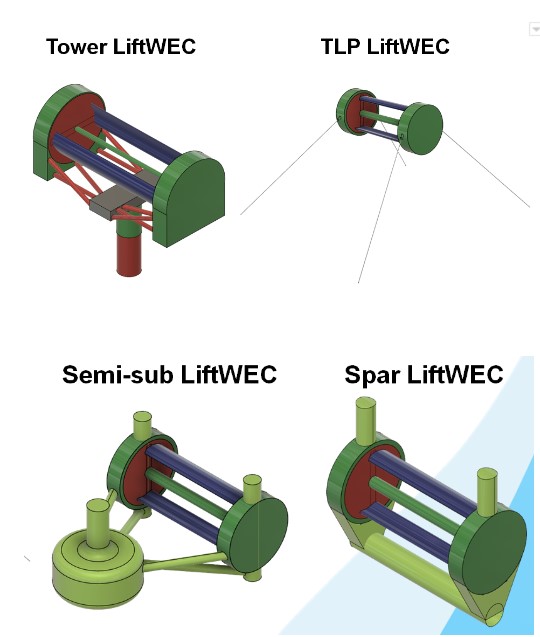Julia F. Chozas works in the LiftWEC Project together with Aalborg University and INNOSEA Ltd. dealing
with the economic modeling of the different LiftWEC configurations.
We have published a technology-agnostic database of costs
of the wave energy sector.
We have also worked on an updated parametric cost model
suitable to lift-based devices.
And we have released the LiftWEC Levelised Cost of Energy
(LCOE) Calculation Tool to ensure consistent and transparent calculation methods and to provide a reference framework
for performing LCOE analyses.

The LCOE Tool has been used to derive LCOE estimates of the four baseline LiftWEC Configurations, and it has allowed the identification of the cost centres with highest and lowest impact on the LCOE. The four configurations consist of a jack-up tower, a tension leg platform (TLP), a semi-submersible structure and a spar buoy.
The LiftWEC Project
A new type of wave energy converter (WEC) has been proposed within the LiftWEC Project, which primary coupling with the waves is through hydrodynamic lift forces. The considered WEC concepts operate through the use of a rotating hydrofoil that generates lift as the primary interaction with the incident waves. In this 3-year Horizon 2020 funded project, collaborative efforts are being made to determine the potential for using lift in wave energy converters to produce renewable energy at a commercially competitive price. The LiftWEC project final objective is the identification of one or more promising WEC configurations.
Using hydrodynamic lift in a wave energy converter has a number of significant advantages including: the reduction of extreme loads through feathering the hydrofoil, also like a wind turbine, which improves survivability, and unidirectional rotation, which significantly simplifies power extraction over traditional wave energy converters which typically involve reciprocating motions and thus reduce power quality.
A holistic, whole system design and development approach is being taken by the project in an attempt to overcome many of the issues that have previously challenged the wave energy industry. The project is supported by European Union’s Horizon 2020 Research and Innovation Programme under grant agreement No. 851885, project LiftWEC (Development of a novel wave energy converter based on hydrodynamic lift forces).
